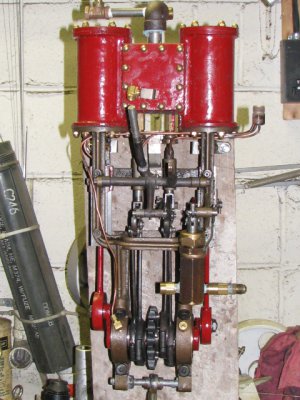- Joined
- Aug 22, 2012
- Messages
- 4,102
I would like to build a steam engine to drive a recumbent tricycle but cannot make up my mind of what design to follow.
I'm leaning towards a twin cylinder double acting slide valve fired by propane and a flash boiler.
Anyone have any idea how large this engine should be to be able to drive this trike?
If I can get something that will drive the trike with possibly a bit of pedal assistance I will eventually turn it into a steampunk design for a bit of fun.
I'm leaning towards a twin cylinder double acting slide valve fired by propane and a flash boiler.
Anyone have any idea how large this engine should be to be able to drive this trike?
If I can get something that will drive the trike with possibly a bit of pedal assistance I will eventually turn it into a steampunk design for a bit of fun.


